How to water indoor flowers?
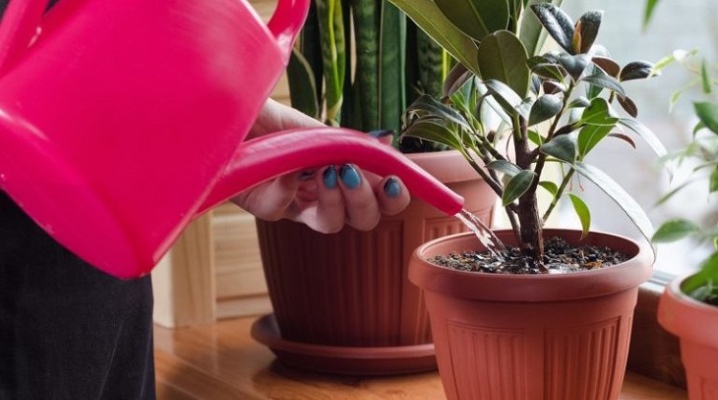
Proper watering of indoor plants is one of the most important conditions for their growth and flowering. Watering requires year-round monitoring and attention. It is in this area that novice growers make a large number of mistakes, which leads to disastrous consequences for plants, and for a flower lover it discourages any desire to deal with plants further.
We will figure out how to water at different times of the year, what can be added to the water so that the plants are strong and beautiful, we will consider what automatic watering systems are recommended for use in a city apartment.
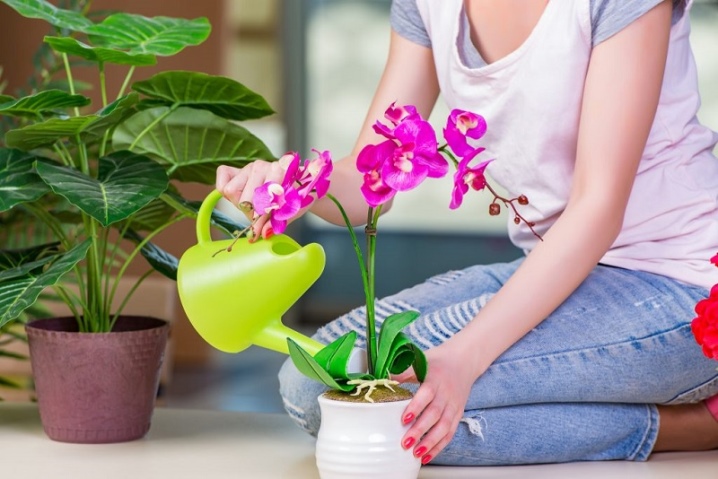
What kind of water can I use?
For a plant, water is the source of growth and life in general. How much a particular plant needs water depends on several factors: the structure of the leaves and stems, the type of root system. For example, succulents can go without moisture for a long time, and begonias require almost daily moisture (in the summer).
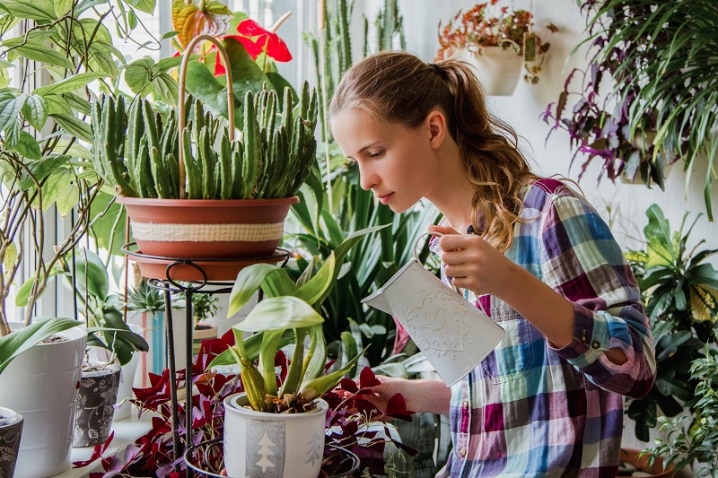
So, in order to properly prepare water for irrigation, you need to consider two main points.
Temperature
Such attention is paid to this factor for a reason: fragrant, flowering plants will not be able to survive watering with cold tap water. Temperature-sensitive flowers and buds will simply die, and the root system will be severely damaged.
Therefore, before watering, the water must be defended until it reaches room temperature.
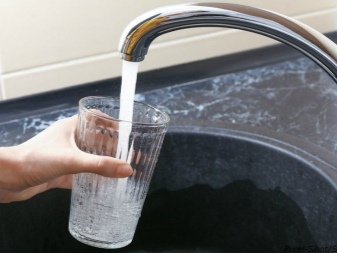
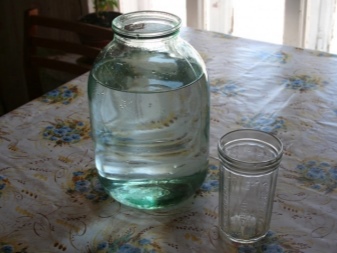
Chemical composition
In general, water is defended not only to raise the temperature. The level of chlorine in tap water is usually significantly exceeded, which can be seen by pouring it into a container. After a while, the saturated white sediment simply settles to the bottom. It is also worth noting the large amount of lime in this water. Therefore, many people prefer to use filtered water for irrigation.
Water with various heavy impurities harms not only the appearance, but also the root system of the plant... Their integrity is violated, and the flower withers ahead of time. Note that the process of boiling and further settling water will not solve the problem of its hardness. This is one of the main criteria for the selection of water for irrigation. The level of hardness depends on how much calcium and magnesium is in the water - the more there are, the harder the water.
It is quite possible to soften hard water at home. For example, you can simply boil it and cool it for later use when watering. Acidifiers are also actively used to soften - citric or oxalic acid.
Applied as follows: 1 teaspoon of acid is stirred in 10 liters of water and set to stand for several hours. Then the water is poured into another container, the remains from the bottom are not used.
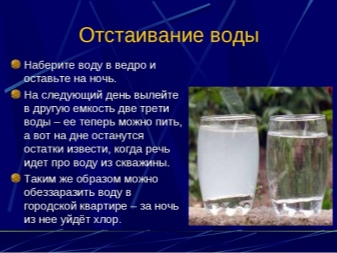
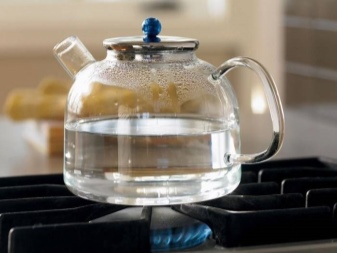
The following types of water are considered soft:
- aquarium;
- distilled;
- boiled;
- rain;
- thawed.
It is clear that rainwater is currently considered ideal for irrigation only with a stretch. In rural areas, it can still be used (far from large industrial cities), but in a large settlement it is unlikely.
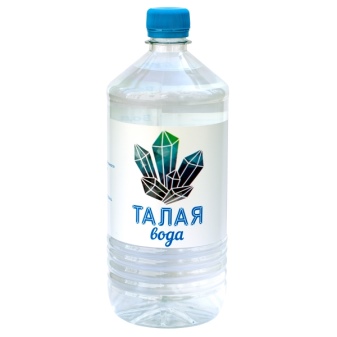

Among ordinary lovers of indoor plants and professional florists, the debate does not subside until then, what kind of water is better to water your favorite plants. Of course, opinions differ, but you can make a small list of the so-called useful water.
- Enriched... In this case, we are talking about the presence of silver ions in it.Plants are watered with this water once a week. You can also water it with sweet water with added glucose.
- Purified tap... Subject to a normal level of hardness.
- Thawed... In this case, the snow should be collected away from highways and industrial areas.
These types of water are optimal for watering indoor plants for a long period of time.
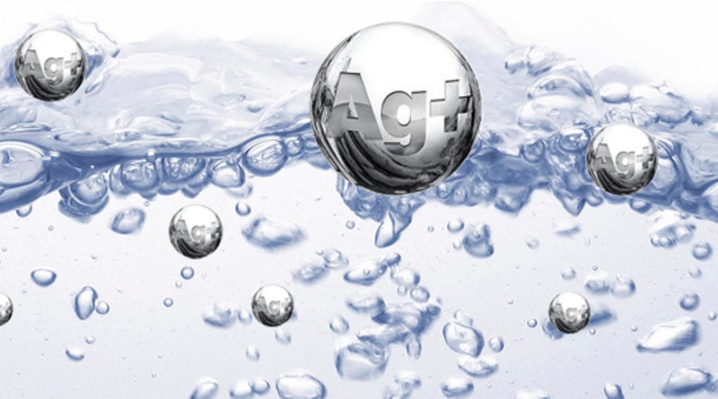
Now let's clarify which water to use. not recommended for watering. First of all, it is distilled... Even representatives of the scientific community call her "dead". It is soft, without impurities of metals, but at the same time there are no vitamins and minerals in it.
In second place - well water... On the contrary, it is oversaturated with minerals. An overabundance of them will not benefit plants.
The third place is taken by water from a lake or river... It contains a large amount of rotting products, various wastes, bacteria. No matter how you clean it, it is dangerous for indoor plants.

Watering rules for the seasons
Several periods of vegetation and active growth of indoor plants can be distinguished. Watering in each season should be different, only in this case the plants give greenery and bloom brightly.
In winter
Firstly, in order to understand how often to water plants in winter, several conditions must be taken into account. Starting from October-November, most indoor plants begin to go through a dormant period. Growth slows down, metabolic processes too. Therefore, the irrigation regime differs radically from the summer one.
Unfortunately, it is in winter that the percentage of plant loss due to unregulated watering increases significantly. The high temperature in the room gives reason to believe that the soil dries out quickly, and therefore requires maximum moisture. But far from it... The root system works slowly, absorbs moisture weaker than in spring and summer. If it is in excess, the soil sour, the root system is subject to rotting.
If the plants are on cold windowsills, there is a high risk that with excessive watering, the roots will begin to rot, the leaves will turn yellow and wither, since the soil is wet.
If there are such signs, the plants can only be saved by drying the earthy coma and removing damaged roots.
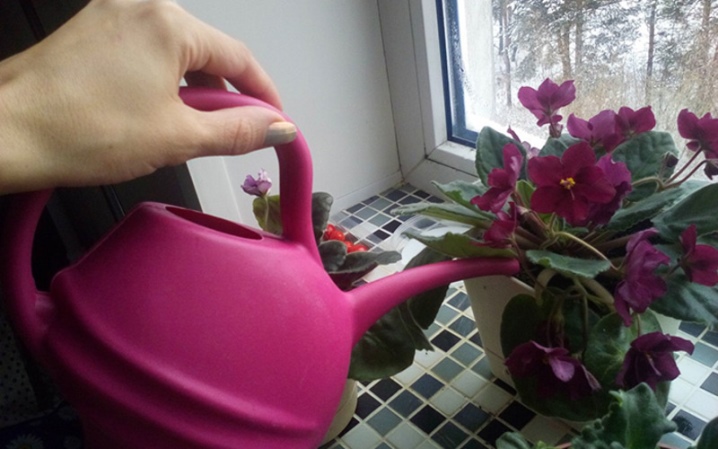
During the heating season, it is better to regularly spray the crown of plants with warm boiled water from a spray bottle... Thus, the soil will be moderately moist.
Indoor flowers that do not require an elevated air temperature are removed to a cool room and watered about once a month to prevent the earthen coma from completely drying out.
Most plants that bloom in winter should be watered regularly, preferably with lukewarm water. Examples include episodes, schlumberger (Decembrists), orchids. Bulbous plants are watered as the topsoil begins to dry out. Succulents are watered carefully in winter, allowing the soil to dry deeply.
Note that the correct watering regime in winter allows indoor plants to rest well and gain strength for future lush flowering and good growth.
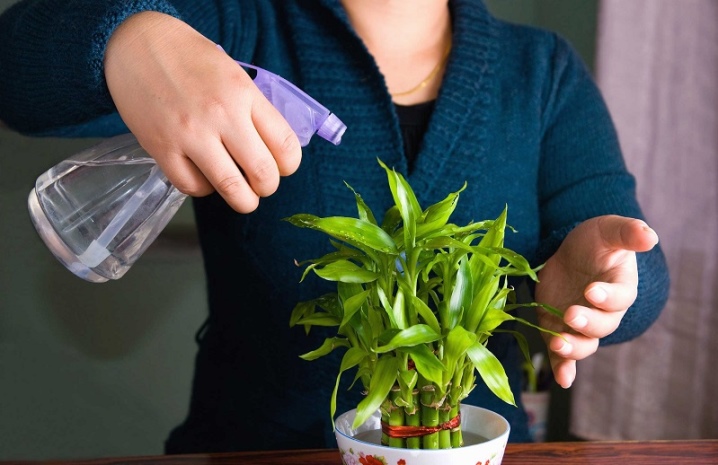
In the spring
In the spring, watering should be approached with all responsibility. Since a new growing season begins, daylight hours increase, watering should be more frequent.
If the heating in the apartment has already been turned off, and the temperature outside is low, it will be correct to water the flowers with caution and in moderation.... Spraying in the spring should also be part of complex flower care. It creates the right level of moisture at which the plants are comfortable.
To determine the need for watering, you need to pay attention to the topsoil or to a special indicator that can be purchased in specialized stores.
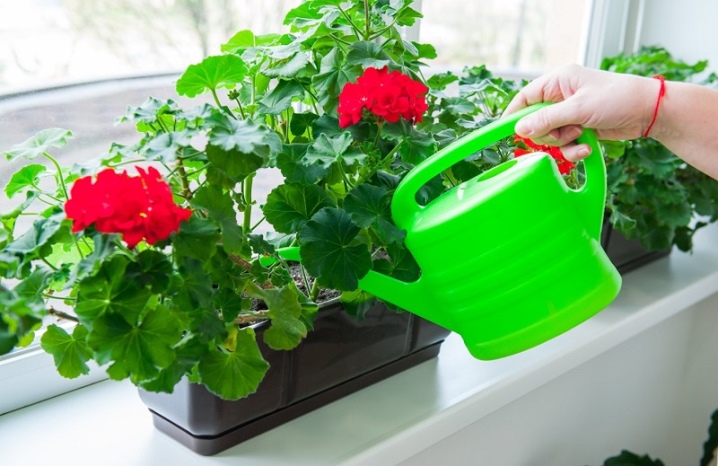
Summer
In the summer, indoor plants develop and grow vigorously. Accordingly, watering should be more frequent and more intensive. Besides, care must be taken that the soil in the pots does not dry out completely... At this time, watering can be carried out with water with the addition of various nutrients: succinic acid, hydrogen peroxide, glucose.
Moderate watering in the summer is necessary for cacti, succulents, zamioculcas, fat women, and so on. Abundant watering is required for moisture-loving balsams, begonias, ferns, spathiphyllum and the like.
During abundant watering, the soil in the pot should be saturated with moisture, for this it is watered in small portions several times with an interval of 15-20 minutes. If water seeps into the sump, stop watering.
On cool and cloudy summer days, watering should be less abundant than on hot and sunny days.
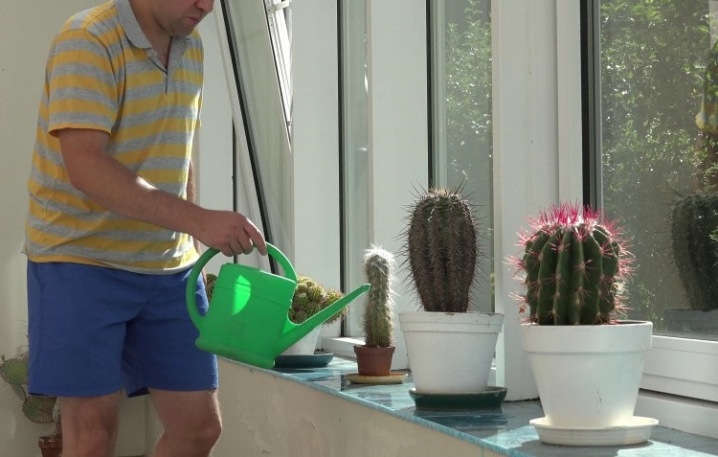
In autumn
Autumn is a transitional season for indoor plants. This is a period of high risks, since the daylight hours decrease, the heating season begins, therefore, it is necessary to adjust the watering of the flowers.
The main guideline for watering in the autumn is the weather outside the window. If the days are sunny, you need to make sure that the soil does not dry out completely, but if it is cool and cloudy, then it is better to skip watering, wait for the soil to dry out.
Indoor plants require less moisture in autumn than in summer and spring, so even spraying should be taken more seriously.
In some cases, it is better to purchase a humidifier.
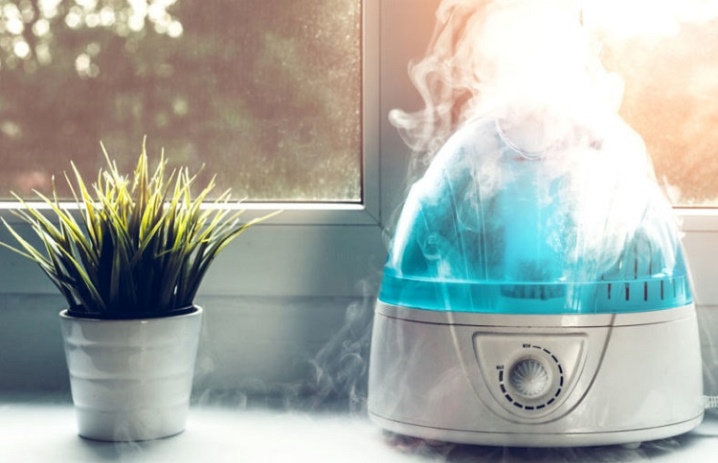
The ways
There are 3 main ways to water your plants. Let's consider them in more detail.
Traditional (upper)
This option is the most famous. With rare exceptions, most plants (light-loving, shade-tolerant, succulents) are watered this way. Watering should be accurate, and water should fall under the root of the plant.
If moisture gets on the buds, the appearance of the flower can be seriously affected.
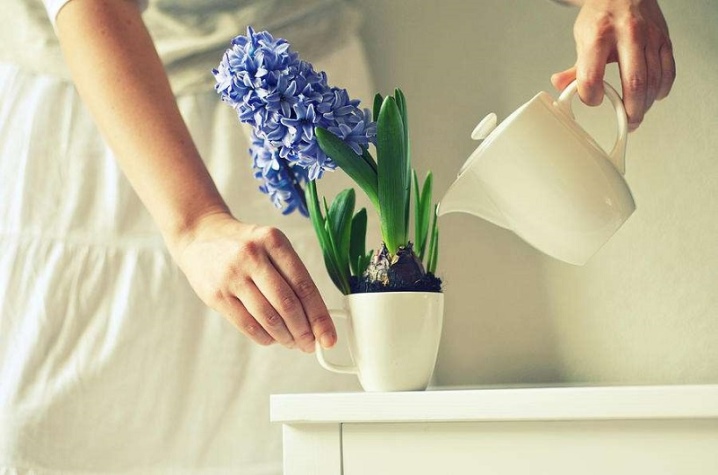
Bottom (through the pallet)
Bottom watering is often used when growing flowers such as Saintpaulia, Gloxinia, Cyclamen, and a number of others. The essence of such watering is as follows: a pot with a plant is immersed in a container filled with water for a certain time, and the excess moisture is then simply drained.
This type of watering is mainly used to prevent the growth point from decaying in delicate plants when moisture enters. There are situations when the bottom watering is replaced with a very neat top one.
There is an exception to this rule. These are plants belonging to the Bromeliad family.
Most of these plants prefer moisture inside the outlet (especially in summer).
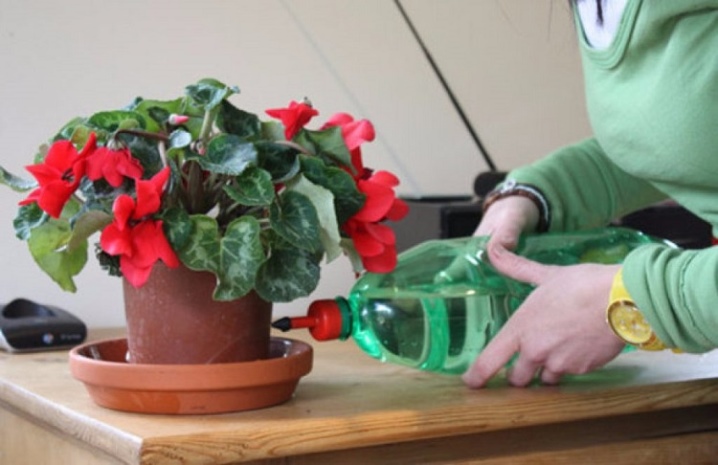
Dosed
Dosed irrigation includes various automatic irrigation systems, drip irrigation, wicks, capillary mats, hydrogel balls.
The hydrogel is made from granular polymers and absorbs moisture well. All the moisture that has accumulated inside, the hydrogel balls give to the root system of the plants. On average, this moisture will be enough for indoor flowers for 2-3 weeks. Experts recommend using already swollen hydrogel granules for indoor flowers..
It is worth mentioning what time of day it is better to water indoor flowers. Regardless of which watering method is chosen, it is more advisable to carry it out in the morning, although the ambient temperature must also be taken into account. In summer, if your plants are located on a balcony or loggia, watering is carried out until noon.
If the night temperature drops to +15 degrees, watering in the evening is dangerous for the root system of flowers. It is worth doing the same in winter and autumn.
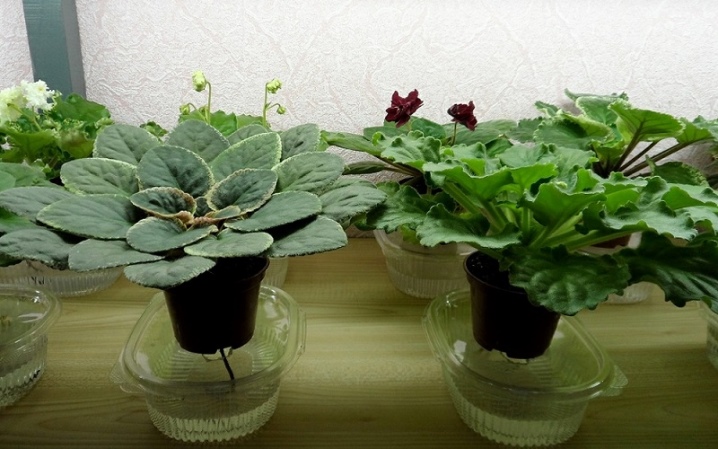
Self-irrigation systems
The automatic irrigation system for indoor floriculture allows for a long time to maintain moisture at the required level of flowers. It is especially relevant if you need to provide humidity during a long absence of the owners.
Let's analyze the most famous options for autowatering systems and start with micro-drip devices. They are connected to the central water supply system. There is a timer, thanks to which the level of water supply and shutdown is regulated.With such a system, you can leave your green pets at home for 2 weeks or more.
A good option for the owner of a collection for 20-30 pots is a micro-drip irrigation system with a special container. Such devices are equipped with tubes through which water flows to the droppers.

Drippers can be ceramic-tipped or plastic and inserted into the ground in a pot. If the dropper is plastic, then it is adjusted manually, while ceramic ones are considered more modern and are indicators of soil moisture. Ceramic cones have become popular among flower growers.... But they also have their drawbacks: they are prone to clogging, they do not always supply water normally.
In second place in popularity can be put flasks - "enemas" in the form of balls... They have watering pipettes that need to be filled with water and placed in a planter with a plant. As soon as the soil begins to dry, the oxygen from the stem of the flask will push the water out. The device is not bad, but adjusting the water supply in this case is not possible, which is fraught with a gulf.
On the third place self-irrigating pots... The device actually consists of a pair of containers: one contains a plant, the other is filled with water. The plant absorbs moisture through wicks. Such designs are equipped with a special indicator that allows you to understand how much water is left in the container and when it needs to be refilled.
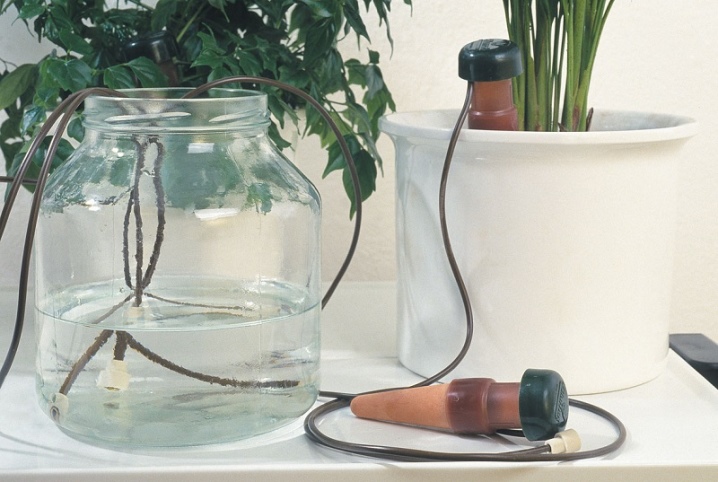
Further it is worth mentioning the capillary mats. This is a rug made of fabric that can absorb a lot of moisture. Pots with plants are placed on the mats, and the tips are dipped into a container of water.
When making a choice of an autowatering system for a home, you need to analyze the pros and cons. So, about the pros:
- simple technology of use, which allows you to organize watering even during vacation or business trip;
- no need to leave the keys to the apartment for strangers;
- modern models of sprinklers often cope with watering better than humans.
On the other hand, automatic watering is not as ideal as it seems:
- any mechanism can fail, and your favorite plants will suffer;
- really "smart" devices are expensive, not everyone can afford it;
- self-made devices are unlikely to last long.
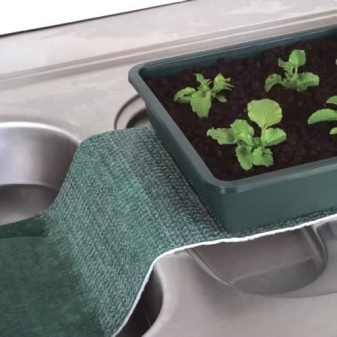
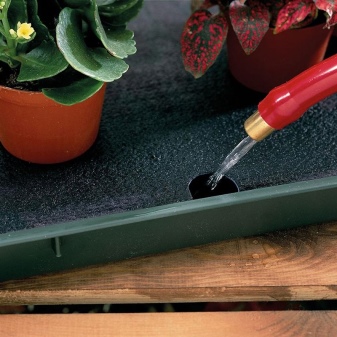
Spraying features
From time to time, spraying or showering is a must for our favorite plants. Such processing can be carried out using only water or in combination with top dressing.
For the procedure itself, you first need a spray bottle. Now a large number of their modifications are on sale, you need to choose one that allows you to regulate the water pressure.
Only soft water should be used for irrigation, since hard water contains a huge amount of various salts.
Consider which plants you can spray and which don't like it. Here, in fact, everything is simple.
- Do not spray flowers with pubescent leaves. These are gloxinia, violets, episodes and the like.
- Rarely and very carefully, you can spray flowers with thin foliage with frills - pelargoniums, caladiums, streptocarpus.
- If the plant has glossy dark foliage, then you can spray it. Ficuses, dieffenbachia, citrus fruits, codiaums, philodendrons love water treatments.
- And there are flowers that simply cannot live without spraying. These are azalea, cypress, caladium, fern, plants of the Marantovaya family.
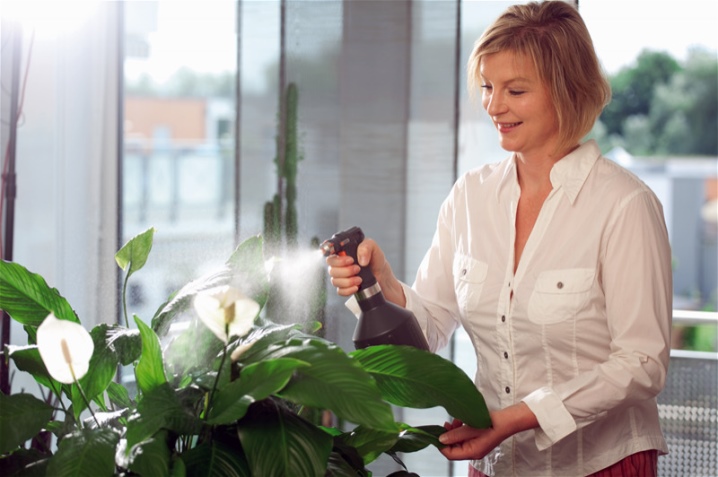
Spraying has its own characteristics, ignoring which, you can lose the plant. So, let's formulate the basic rules:
- foliage is irrigated only when direct sunlight does not fall on it;
- sprayed only after watering;
- if the plant blooms, you need to make sure that water does not get on the buds;
- in winter, spraying is reduced if the plants are placed on cold windowsills, and increased if they are near heating radiators;
- cacti are sprayed very rarely and carefully.
In addition to water, spraying can be carried out with adaptogens, growth stimulants, vitamins.
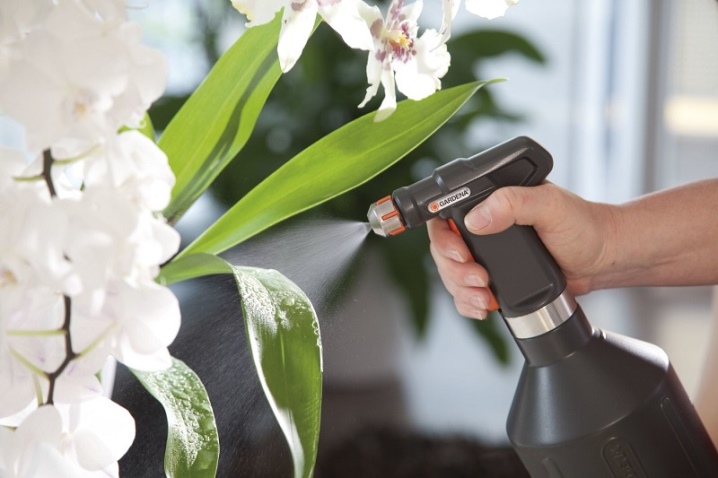
Recommendations
Experts recommend when watering plants, be sure to pay attention to the following factors.
- The age of a particular plant... Young plants have weaker roots than adults. Therefore, young plants should be watered more often, but little by little.
- Pot size... If the plant is small and the pot is large, you rarely need to water it. If, on the contrary, then watering is required more often.
- The material from which the pot is made... If the plant is in a ceramic or clay pot, water it more often than a flower that grows in a plastic planter.
- The structure and type of leaves... If the plant has a lot of large, soft leaves, then it should be watered frequently. Owners of thick leathery leaves, as well as those covered with a waxy coating, tend to store moisture for future use.
- Appearance... If the foliage of the plant is sluggish, has a brown color, this indicates an excess of moisture.
- Falling foliage - a direct sign of a lack of water.
Summing up, we can say that the correct watering of indoor plants and flowers will allow you to admire the healthy foliage and luxurious flowering of your favorite green pets for a long time.

You will learn how to water indoor flowers below.































The comment was sent successfully.